ARE YOU NEW TO HEATING OIL IN DE, MD, & PA?
Here’s what you need to know about your oil heating system.
As an oil heat consumer, you should know that oil is clean, efficient, cost-effective, safe, and versatile.
Heating oil is one of the most effective ways to heat your home. Oil has excellent energy potential, and new oil heat systems are highly efficient & effective.
1. YOU own your heating oil tank. It belongs to the home.
Because propane companies own the propane tanks at home, this can be unclear to someone new to heating oil. The oil tank in your home does not belong to the oil company, and you can use whatever oil company you want to fill your tank.
2. You CAN run out of heating oil.
If you are coming from electric or natural gas heat, those sources do not “run out.” However, the heating oil in your oil tank can and will run out if not replenished regularly. Consider automatic delivery to ensure this never happens and you go without heat or cause damage to your heating system.
3. You must familiarize yourself with your oil heating system basics.
First, you must determine whether you have an oil furnace or a boiler.
How does your oil furnace work?
An oil furnace is a device that burns oil to heat air. 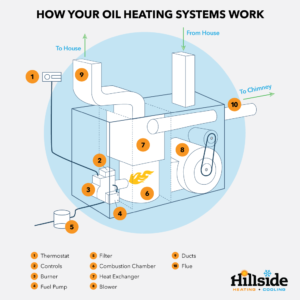
(A) The thermostat sends a signal to the controls on the burner.
(B) The fuel pump draws oil through a filter to the burner.
(C) The burner turns the oil into a fine spray, mixes it with air, and ignites it in the combustion chamber, causing the chamber to become very hot.
(D) Air absorbs heat in the heat exchanger.
(E) A blower sends this air through ducts to heat the home.
(F) The air eventually circulates to the heat exchanger, and the cycle continues. (G) Combustion emissions are vented out of the flue.
H) Hillside Oil Heating & Cooling is a full-service heating oil company. We deliver fuel to your home and can install, maintain, and repair oil (and natural gas, propane gas, and electric) heating systems in DE, MD, & PA.
Another type of oil heating system is a boiler. Instead of air, boilers heat up, circulating water pumped through pipes to radiators. Some oil heat systems also heat hot water.
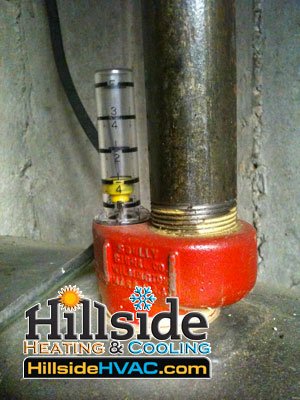
4. Determine how much oil is still in the tank.
Tanks should never be empty. If your tank is less than a quarter full, you should order more oil soon. Running out of heating oil is worse than running out of gasoline in your car.
There are several ways to measure how much oil is in the tank. If you have an oil gauge, you need to read it, but if you don’t, you can use a dipstick or a rod to find out how many inches of oil you have, then consult a tank chart.
Remember: it’s best to be conservative and order your heating oil early rather than in a no-heat emergency. What is the best way to manage this risk? Sign up for FREE Automatic Delivery and let Hillside Oil Heating and Cooling worry about managing your heating oil.
5. Heating oil bills can be expensive during the coldest winter months.
Budget plans are available. A monthly budget plan is an effective way to avoid large peak-season bills. Monthly budget payments allow customers to spread their heating expenses throughout the year. The calculation of a customer’s monthly budget is straightforward. Hillside uses estimated annual expenditures and divides that amount into equal monthly payments. The budget amount may be adjusted up or down as many times as needed throughout the season, depending on price and weather.
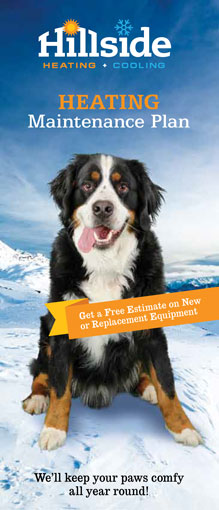 6. Oil heat systems do require maintenance.
6. Oil heat systems do require maintenance.
An annual check-up is a critical maintenance task. This includes inspection, cleaning, tuning up, and replacing some parts, such as filters and nozzles, as needed. Correctly maintained oil heat systems can last for up to 20 years.
WHAT TO DO WHEN YOUR OIL FURNACE HAS NO HEAT
No heat checklist on your oil fired furnace.
1. Check your thermostat.
Make sure your thermostat is set to heat and set high enough to call for heat, meaning the desired temperature is higher than the room temperature. Also, make sure if your thermostat requires batteries, the batteries are good.
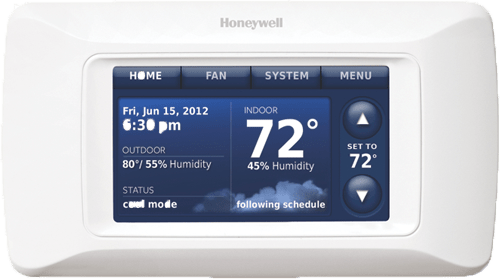
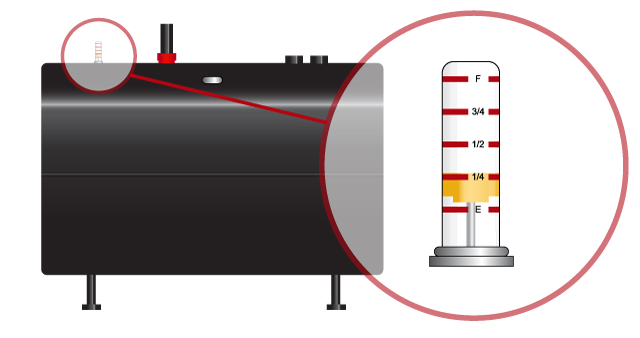
2. Make sure you have oil in your tank.
Locate your tank: Your oil tank is more than likely in the basement or outside the house, relatively close. It’s a giant metal tank. Do you know how to read your oil tank gauge?
Find the fuel gauge: Your oil gauge is a clear tube with a float inside and will be located on top of the oil tank. A standard residential oil tank holds 275 gallons. Based on that size, the following readings indicate how many gallons of oil your tank contains. The float goes up and down according to how much fuel is in the tank:
- F (full) = 275 gallons
- 3/4 = 200 gallons
- 1/2 = 130 gallons
- 1/4 = 70 gallons
- 1/8 = 40 gallons
- E (empty) = near empty
Reading your gauge is like reading the gas gauge in your car. If the float is not visible at the bottom of the tube, the tank is empty or close to empty. See Hillside’s Tank Chart.
Do NOT always trust your gauge; they can be finicky. You will need a straight stick to check your heating oil level in an oil tank manually.
Remember: We recommend ordering heating oil when your tank is one-quarter full rather than in a no-heat emergency. Sign up for our Worry-Free Winter; we’ll manage everything for you.
3. Locate the emergency shutoff switch. 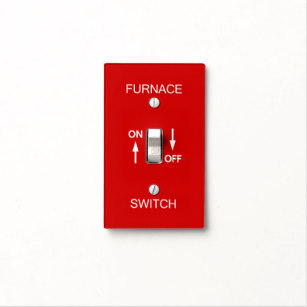
Usually, the emergency shutoff switch is located near the basement steps and/or next to your heating system. Make sure the switch is in the “ON” position. These switches look like light switches and accidentally get turned off if you have guests. This happens more frequently than you might think.
4. Check your power source.
Locate and open your electrical panel. It’s usually found in the basement or a utility room. Check for and fix any blown fuses or tripped circuit breakers. Sometimes, our furnace technicians “repair” the furnace by simply making sure your furnace is getting power.
5. Reset your system.
Sometimes, a simple system reset is all that’s needed. Locate your heating system’s burner, press the reset button ONCE (and only ONCE), and listen for the system to start. If you had to open the door to access your furnace, be sure to close that door after pressing the reset button.
If you have an emergency, call Hillside at 302-738-4144 or 410-398-2146
The Hillside Maintenance Plans
Keeping Your Paws Comfy All Year Round
The Hillside Maintenance Plans are designed to prevent minor problems from turning into major issues! Extend the life of your equipment, reduce the need for costly repairs, and increase the performance of your heating and cooling systems while lowering your utility bills.



